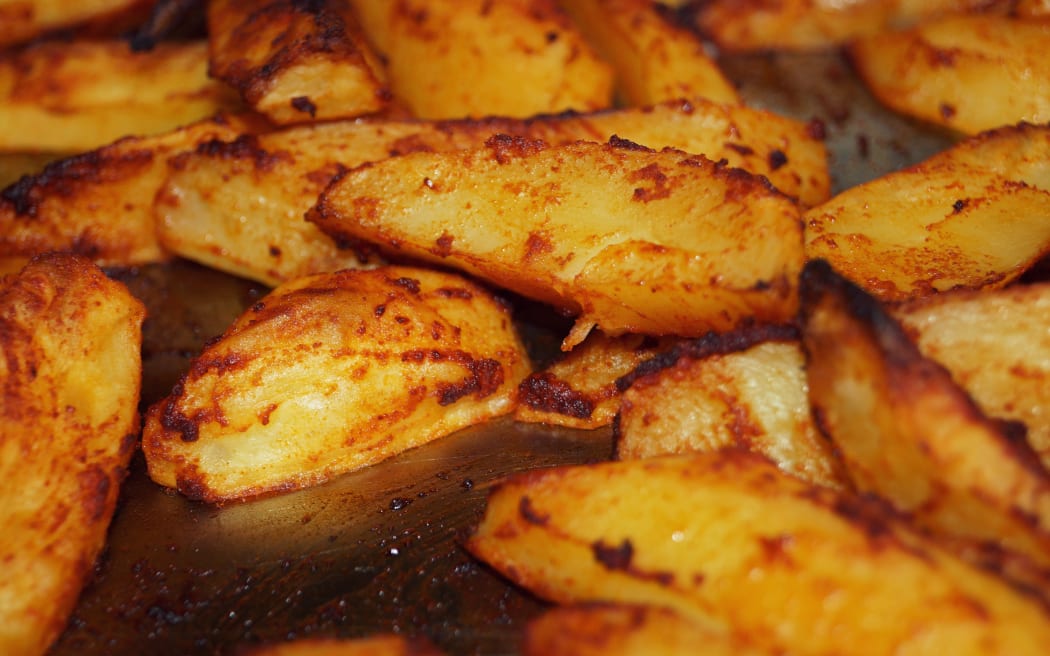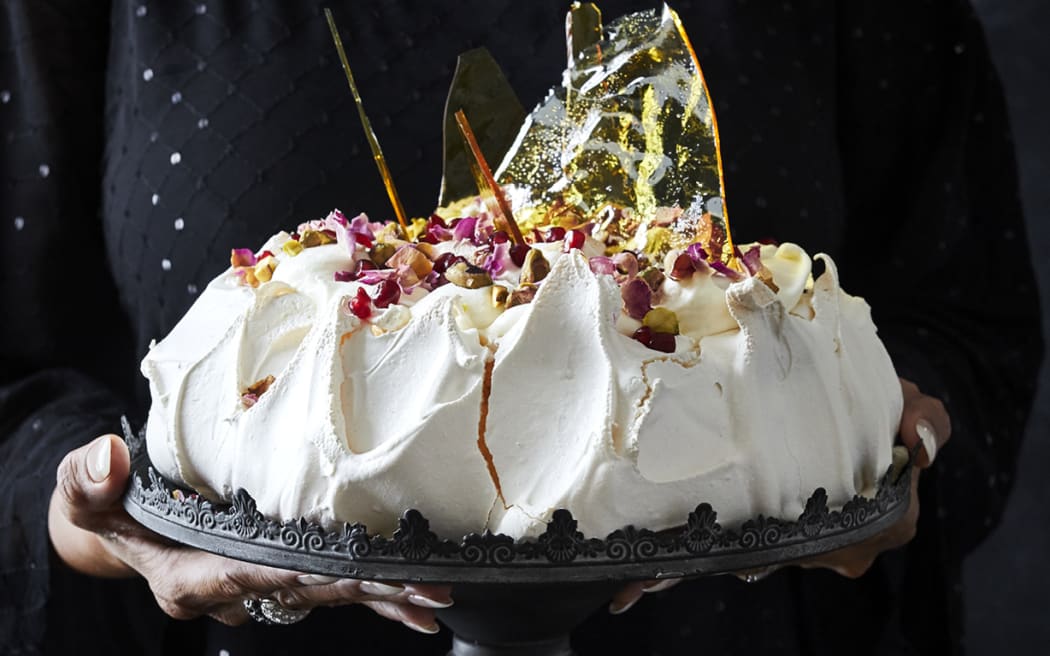The terms 'crispy' and 'crunchy' are often used interchangeably to describe the texture of certain foods, but do you know they actually sound different?
Crispy food – which tends to fracture quickly and easily in our teeth – emits a high-pitched sound at the point of impact, says Sofia Rodrigues, a food physicist based at the University of Waikato.
She chats to Jesse Mulligan about shares tips for perfecting the texture of your roast potatoes and pavlova.

Roasted potatoes Photo: Pixabay

Sophia Rodrigues - a food physicist based at the University of Waikato Photo: University of Waikato
Food physicists regard the things we eat as "materials", Rodrigues says, and their job is to figure out what happens as they get compressed between our teeth during eating.
In the world of food physics, 'crispy' and 'crunchy' are measured by the mechanical force required to compress food until it fractures into small pieces, how easily it fractures and the brittleness of the food itself.
Crispy foods tend to be dry and rigid, Rodrigues says. When we bite into them – usually using our incisors – a relatively high-pitched sound is emitted.
Crunchy foods, on the other hand, tend to be dense and textured. When we chew them – usually using our molars – they "undergo a series of fractures" and emit a relatively low-pitched sound.
As an aspect of food, they're two of the most universally popular "textural attributes".
"Not everyone will like chewy or dry textures … but with crispy and crunchy they say everyone usually likes it."
We commonly associate the presence of crispiness and crunchiness in a meal with top-quality cooking, Rodrigues says.
"If it's present in a dish, usually it will enhance or contrast the texture to make it more exciting and enjoyable.
"if you're a fan of cooking shows like MasterChef this is probably not news to you. A lot of the winning dishes will have more than one texture present on the plate."
- Cooking tip for Roast Potatoes: Add a little baking soda
To get the insides of your roast potatoes "nice and soft and fluffy", they need to be parboiled before they're roasted in the oven, Rodrigues says.
She recommends adding a little baking soda to the water you're parboiling them in.
"It helps to break down the pectin. Pectin is like the glue that holds your vegetable cells together, [it's like] the mortar in between the bricks. You want to break down that pectin to form a starchy slurry on the outside of your potato that will then dry and form a crispy layer when you're cooking it.
Cooking your roast potatoes at 230 degrees fan-forced should give them a perfect crispiness on the outside, Rodrigues says.

Pavlova with rose cream, cardamom and salted caramel shards Photo: s
- Cooking tip for Pavlova: Add a little cornflour
Sometimes a pavlova – aka "an oven-fried egg form" – can sweat in humidity and the surface will get soft and sticky, Rodrigues says.
To give your pav "a little bit more resistance to humid weather", Rodrigues recommends adding a little bit of cornflour to your mixture.
"The starch will soak up any water in the pavlova."
Sugar – caster, not granulated – also improves the texture of a pavlova.
"When sugar dissolves into the water of the egg whites, it increases its viscosity. That's how to form that nice glossy meringue as opposed to a fragile egg-white form. It strengthens the air-water interface and then allows you to form a finer dispersion of air bubbles.
"They say the more sugar you add, the more body the pavlova will have and the crispier it will be when baked. But of course, you don't want to go too sweet."
Pavs are best baked low and slow, Rodrigues says. Think 110 degrees C for at least an hour, maybe two.
"You're slowly drying out the form, you're just evaporating the water from it, you're not caramelising the sugar."

